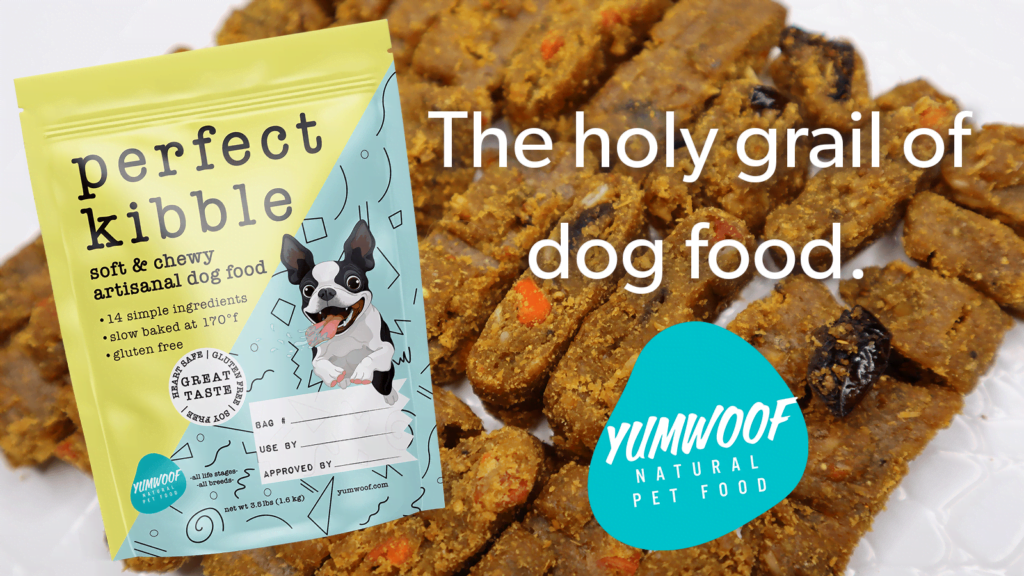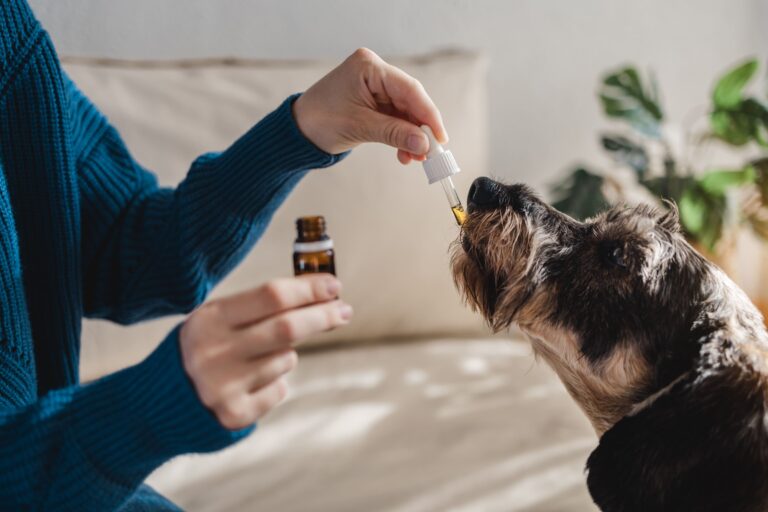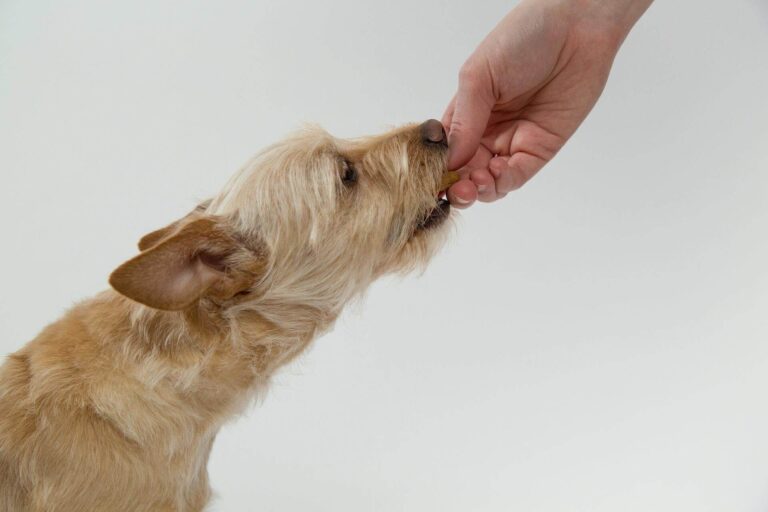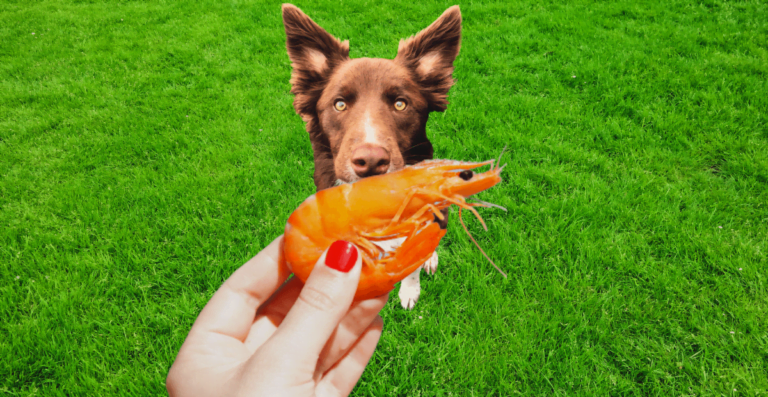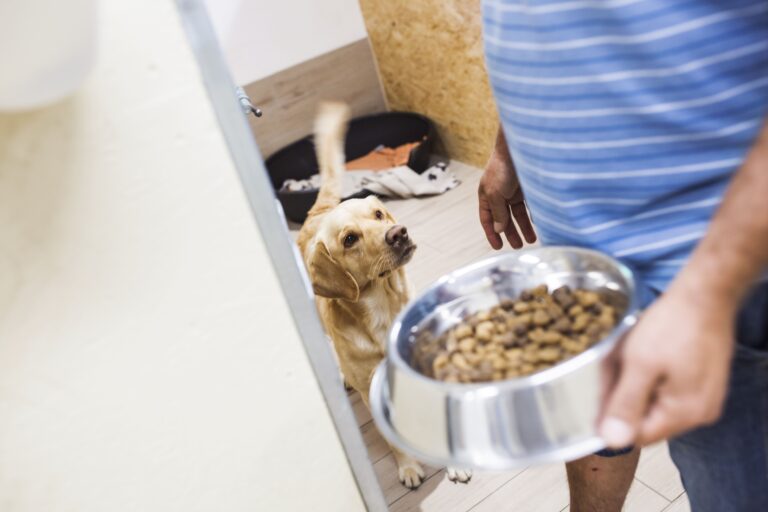Can Dogs Eat Grapes? Risks and Facts Revealed
As a loving pet owner, you’re always looking for ways to keep your canine companion both happy and healthy. You might occasionally feel tempted to share your snack with them, especially when those big puppy eyes plead for a taste.
But when it comes to something as simple as grapes, the stakes can be unexpectedly high. Are you aware of the canine health risks associated with grape toxicity in dogs? It’s a query that intersects the realms of culinary enjoyment and pet safety, triggering an urgent need for clarity. Can dogs eat grapes without harm, or is this common fruit a hidden hazard in your home?
- An Overview of Grapes and Canine Health
- Why Are Grapes Unsafe for Dogs?
- Understanding Grape Toxicity in Dogs
- Can Dogs Eat Grapes: Demystifying the Myth
- Scientific Findings on Dogs and Grapes
- When to Seek Veterinary Care
- Dog-Friendly Fruits as Alternatives to Grapes
- Safe and Healthy Fruit Options
- Fruits That Are Harmful to Dogs Beyond Grapes
- FAQ
Key Takeaways
- Understanding the severe canine health risks associated with grape toxicity in dogs is crucial for pet safety.
- Despite their innocuous appearance, grapes can pose a serious health threat to your furry friend.
- Educating yourself on what foods are harmful can prevent emergency situations for your dog.
- Being informed about the signs of grape toxicity can save your dog’s life in case of accidental ingestion.
- Commit to deepening your knowledge of your dog’s dietary needs and restrictions.
An Overview of Grapes and Canine Health
As a dog owner, you’re likely aware that certain foods can pose significant health risks to your furry friends. Among various foods, grapes are particularly notorious for their harmful effects on canine health. It may come as a surprise, but these innocuous-looking fruits are indeed classified as toxic foods for dogs. Understanding the risks associated with grapes and ensuring the safety of your pets are vital responsibilities that come with pet ownership.
In this section, we’ll delve into why canines and grapes don’t mix and what you, as a responsible pet owner, need to know about grapes and canine health. Let’s explore the underlying reasons that make grapes a strict no-no for your dog’s diet and how awareness can prevent potential health crises.
- Grapes and their dried forms (raisins) have been linked to acute kidney failure in dogs.
- Even a small amount can be dangerous, with toxicity symptoms manifesting regardless of a dog’s breed, sex, or age.
- Every part of the grape is toxic to dogs—flesh, seed, and skin alike.
Preventing access to these toxic foods for dogs is essential in maintaining a safe home environment for your pet. If you’re curious about what makes grapes so hazardous or you’re seeking alternatives to satisfy your dog’s fruity cravings, stay tuned as we explore further.
| Food Item | Safe for Dogs? | Health Risks | Alternatives |
| Grapes | No | Kidney failure, sudden illness | Apples (without seeds), Blueberries |
| Raisins | No | Same as grapes | Watermelon (without seeds), Strawberries |
| Chocolate | No | Theobromine poisoning | Carrots, Green beans |
| Avocado | No | Persin toxicity | Bananas, Peaches (without pit) |
Consider this compilation of safe alternatives as a stepping stone towards creating a nutritious and hazard-free diet for your dog. Remember that with the right knowledge and attention to dietary details, you can ensure that your dog remains healthy and vibrant. Stay informed, and always keep your pet’s well-being at the forefront.
Why Are Grapes Unsafe for Dogs?
When it comes to toxic foods for dogs, grapes consistently top the list, but what exactly makes these popular fruits dangerous for our canine friends? In the ensuing sections, we’ll dive into the science behind this phenomenon and share critical advice on recognizing the signs of grape toxicity.
Understanding Grape Toxicity in Dogs
The precise compound responsible for grape toxicity in dogs has yet to be identified. However, researchers agree that even a small amount of grapes can lead to severe, acute kidney failure. The risk is not tied to a specific breed, age, or gender, which makes grapes indisputably unsafe and among the most hazardous fruits that are harmful to dogs. Whether they’re seedless, peeled, organic, or part of a meal, the threat remains unchanged.
Signs of Grape Toxicity to Look Out For
If your dog has ingested grapes, they may display symptoms within a few hours. These signs of grape toxicity can be varied and may progress over time:
- Vomiting
- Diarrhea
- Lethargy
- Dehydration
- Decreased appetite
- Abdominal pain
- Severe weakness
- Excessive urination
- Lack of urination
It’s worth noting that the severity of symptoms can differ from one dog to another; thus, any suspicion of grape ingestion should prompt immediate action and consultation with a veterinarian.
| Symptom | How to Recognize | Actions to Take |
| Vomiting | Dog may retch and expel stomach contents. | Remove any remaining food and monitor hydration. |
| Diarrhea | Loose and more frequent bowel movements. | Ensure water is available; watch for signs of dehydration. |
| Lethargy | Less active, potentially coupled with a disinterest in usual activities. | Keep your dog rested and avoid stress. |
| Kidney Failure (Severe) | Complete loss of appetite, noticeable abdominal pain, changes in urination. | Contact your veterinarian immediately. |
As pet owners, it’s crucial to realize that what seems like a harmless treat could potentially lead to life-threatening conditions. By ensuring your home is free from toxic foods for dogs, you’re not just preventing a medical emergency; you’re preserving the joyful spirit and well-being of your furry companion.
Can Dogs Eat Grapes: Demystifying the Myth
It’s a question that continues to circulate among pet owners, potentially putting four-legged friends at risk: can you give a dog grapes? Despite the persistence of this query, the concise answer is no, dogs and grapes do not mix. While it might seem harmless to share a grape or two with your pup, what appears to be an innocent treat can have dire consequences. Here, we’ll address the prevalent myths and provide insights from veterinary professionals to underscore the reasons to avoid grapes for dogs.
Some believe that a small amount might not do harm, or that only certain breeds are affected by grape toxicity. However, these assumptions are not only incorrect but dangerous. To dispel these myths, let us look at some key facts that emphasize why grapes should never be a part of your dog’s diet.
| Myth | Reality |
| Grapes are a healthy snack for all pets. | Grapes, while healthy for humans, can cause acute kidney failure in dogs. |
| Only certain grape varieties are toxic to dogs. | All types of grapes, irrespective of variety, color, or form (including raisins), are toxic to dogs. |
| Only some dogs can get sick from grapes. | Grape toxicity can affect dogs of any age, breed, or gender. |
| A small amount won’t cause any harm. | Even a small quantity can be extremely harmful, and there is no known safe dose of grapes for dogs. |
| My dog has eaten grapes before and was fine, so they must be safe. | Grape toxicity can be cumulative, and symptoms may not show immediately. It is still critical to avoid grapes to prevent future health issues. |
Assertions that dogs can safely consume grapes are dangerous. Trusted veterinarians and experts categorically advise that you avoid offering any quantity of grapes to dogs. Erring on the side of caution is the best practice to prevent potential kidney failure, which can have devastating effects. It’s crucial to keep not just grapes but all raisins and grape-containing products out of your dog’s reach.
“No grapes, no raisins, no exceptions. Keeping your pets safe from toxic foods is an act of love and responsibility.” – Veterinary statement on the dangers of grapes.
In short, while debunking this widespread myth, let’s prioritize the safety and well-being of our canine companions by eliminating grapes from their diet completely. So next time you’re enjoying a bunch of grapes, remember: what’s a treat for you, could be a threat to them.
Scientific Findings on Dogs and Grapes
Recent scientific research sheds light on the complexities of grapes and canine health, leading to a deeper understanding of canine toxicology. As a dog owner, it’s imperative to stay informed about the potential dangers that grapes pose to your furry friend. Numerous studies have consistently aligned with the stance that grapes can cause acute kidney failure in dogs, yet the exact compound responsible remains unidentified.
Dog owners often question the validity of these claims, looking to the rigor of scientific methods for answers. These concerns are not unwarranted, considering the varying effects grapes can have among different dogs. The gravitas of scientific research provides a foundation for deterring pet owners from exposing their pets to such risks.
The table below consolidates crucial findings from prominent studies in the field, offering an overview of the known impacts of grape consumption in dogs. This compilation of scientific data serves to reinforce the current understanding of canine toxicology regarding fruits like grapes.
| Study | Objective | Findings | Significance |
| Journal of Animal Physiology | Identify acute effects in canines post ingestion | Confirmed link to renal failure | Highlighted grapes’ toxic nature |
| Veterinary Quarterly | Estimate toxic dose per weight | Variability in toxicity; no safe dose established | Reiterated importance of complete avoidance |
| Companion Animal Nutrition Study | Study long-term effects of grape consumption in dogs | Long-term health consequences including chronic kidney disease | Stressed the prolonged health implications |
The consequences of feeding grapes to dogs can be unpredictable and, in many cases, severe. While the exact mechanism of toxicity remains a topic of ongoing scientific research, the consensus advises against inclusion of grapes in dog diets. It is critical to follow these guidelines until science reveals more definitive answers to the many questions surrounding grapes and their impact on canine health.

What to Do If Your Dog Consumes Grapes
If your furry friend has accidentally eat grapes, it’s critical to respond swiftly to minimize the risk of grape toxicity. Knowing immediate actions for grape ingestion can be lifesaving. It’s also important to understand when to seek veterinary care for your dog’s health and safety.
Immediate Actions to Reduce Health Risks
Taking quick and effective measures can greatly influence your dog’s response to potential grape toxicity. Here’s what you can do immediately:
- Identify: Check how many grapes were eaten, if possible.
- Remove: Ensure no more grapes are within reach to prevent further ingestion.
- Contact your vet: Time is of the essence. Call your veterinarian or an emergency animal hospital for immediate actions.
When to Seek Veterinary Care
Post ingestion, monitoring your dog for symptoms of toxicity is paramount. Here are signs indicating that your dog needs veterinary care:
| Symptoms | Actions |
| Vomiting or diarrhea | Contact your veterinarian immediately. |
| Lethargy or weakness | Rush to the nearest animal hospital. |
| Abnormal thirst or urination | Seek professional advice, could indicate kidney issues. |
| Loss of appetite | Maintain hydration and visit the vet ASAP. |
Don’t wait for the symptoms to appear. If you know your dog has eaten grapes, the best dog grape toxicity response is to seek veterinary care immediately.
Dog-Friendly Fruits as Alternatives to Grapes
While grapes are a no-go for your furry companion, the world of dog-friendly fruits offers a myriad of safe alternatives to grapes that contribute to canine well-being. These fruit options not only provide a satisfying treat but also come packed with vitamins and nutrients that can enhance your pet’s health.
Safe and Healthy Fruit Options
Certain fruits are not just safe, but they can be outright beneficial when incorporated into your dog’s diet. Here’s a list of some nutritious and delicious dog-friendly fruits to consider:
- Apples (without seeds and core)
- Bananas (in moderation due to high sugar content)
- Blueberries (rich in antioxidants)
- Oranges (in small amounts, without seeds and peel)
- Pears (seeds removed, as they can be toxic in large quantities)
- Watermelon (seedless and rind-free)
Remember to introduce these fruits into your dog’s diet gradually to avoid stomach upset and monitor for any allergic reactions. Always, moderation is key.
Fruit Snacks that Promote Canine Well-being
Fruit snacks can play a role in a balanced diet, offering taste variations that keep your dog’s palate excited and their body healthy:
- Freeze small pieces of fruits for a refreshing summer treat.
- Create homemade fruit purees to mix in with their regular food.
- Use fruit slices as rewards during training sessions for a low-calorie treat.
By choosing the right types of fruits and preparing them safely, you not only give your pooch delicious snack options but also invest in their long-term health. Consult with your veterinarian for personalized advice tailored to your dog’s dietary needs.

Every dog is unique, so take the time to observe how they react to different fruits. With a careful and informed approach, you can enrich your dog’s diet with tasty and nutritious alternatives to grapes that safeguard their health and well-being.
Fruits That Are Harmful to Dogs Beyond Grapes
As a dog owner, it’s crucial to be aware of toxic fruits for dogs and the harmful fruits to avoid to ensure your furry friend’s safety. While grapes top the list, there are other fruits that can be just as dangerous to canine health. Let’s dive into the details and help you recognize which fruits should never make it into your dog’s diet.
Understanding which fruits pose a risk can prevent unintentional harm to your pet. Fruits containing certain toxins can lead to severe health issues, ranging from digestive discomfort to potentially fatal conditions. Check out the list below:
| Fruit | Potential Effects |
| Avocado | Contains persin, which can cause vomiting and diarrhea |
| Cherries | Pits contain cyanide, potentially leading to cyanide poisoning |
| Tomatoes | Green parts have solanine, which might cause gastrointestinal upset |
| Citrus Fruits | High acidity can cause upset stomach; essential oils may be toxic in large amounts |
| Persimmons | Seeds can cause intestinal obstruction |
Bear in mind, while not all fruits are harmful, even the safe ones should be given in moderation as treats, not dietary staples. Always remove seeds or pits to avoid choking hazards or toxic reactions.
What about berries? While many berries are safe for dogs, such as strawberries and blueberries, care should be taken with wild berries, as some may not be dog-friendly.
As a general rule, before introducing any new fruit or treat to your dog’s diet, it’s wise to consult with your veterinarian. They can provide guidance based on your pet’s specific health needs and dietary restrictions, ensuring that your pooch stays healthy and happy.
Toxic Foods for Dogs: A Comprehensive Guide
As pet owners, it’s vital to be vigilant about what foods are available to your furry friend. You want to make sure you’re creating a safe pet environment, and that starts with knowing which common household items could be harmful. This comprehensive guide to toxic foods will help you recognize what to keep well out of reach of your beloved companion.
Common Household Foods to Avoid
Many everyday foods can be poisonous to your dog, even some that are healthy for humans. The below table provides a succinct breakdown of these foods and why they’re considered dangerous.
| Food Item | Toxic Substance | Effect on Dogs |
| Chocolate | Theobromine | Can cause vomiting, diarrhea, heart problems, and potential death |
| Onions & Garlic | Thiosulfate | Leads to anemia by destroying red blood cells |
| Xylitol (found in sugar-free gums) | Xylitol | Can induce insulin release leading to liver failure |
| Avocado | Persin | May cause vomiting and diarrhea |
| Alcohol | Alcohol | Can lead to intoxication, neurological depression, and even death |
| Caffeine | Caffeine | Similar to the effects of chocolate toxicity |
Creating a Safe Environment Free from Toxic Foods
Ensuring your dog doesn’t have access to toxic foods is a critical step in creating a safe and hospitable home. Here are some tips to safeguard your pet:
- Always supervise your dog during meals and parties where food is served.
- Store all hazardous foods out of your dog’s reach in secured cabinets or high shelves.
- Trash should be kept in a bin with a tight-fitting lid to prevent scavenging.
- Educate your family and guests about the dangers of feeding these foods to your dog.
- Consider using childproof locks on cabinets where hazardous foods are stored.
- Regularly check for fallen food items under furniture and appliances.
By keeping these guidelines in mind, you can create an environment that is both enjoyable and safe for your dog, ensuring they remain happy, healthy, and part of your family for many years to come.
Feeding Your Dog: Understanding Canines and Grapes
In our journey to uncover the truth about are grapes safe for dogs, we’ve laid bare the facts: grapes are indeed a serious health hazard for our canine companions. Despite the allure of sharing our snacks with our furry friends, it’s crucial for us to adhere strictly to what’s best for their health. The resounding advice from veterinarians and experts is clear – avoid feeding your dog grapes at all costs to prevent the risk of severe toxicity which can impact their well-being drastically.
Feeding your dog properly is not just a matter of providing proper nutrition but also about protective prevention. As a pet owner, it’s your responsibility to ensure that your dog’s diet is not only nutritious but also safe. We’ve delved into the reasons why some fruits, like grapes, pose significant risks to dogs and explored safer alternatives that can be enjoyed without worry. Remember, choices made in their diet can have lasting effects on their health and happiness.
Wrapping up, it’s essential to reinforce that while our dogs may beg for a bite of whatever we’re eating, not all human foods are safe for them. By educating ourselves on the specifics of canine dietary needs and dangers, such as the grape toxicity we’ve highlighted, we contribute to a longer, healthier, and more joyful life for our beloved pets. Responsible pet ownership echoes through the choices we make for their meals, and together, we can ensure our dogs continue to thrive.
FAQ
Can dogs eat grapes?
No, dogs should not eat grapes. Grapes are known to be highly toxic to dogs and can lead to acute sudden kidney failure. Even small amounts can prove to be very harmful to canine health.
What makes grapes unsafe for dogs?
The exact compound that makes grapes toxic to dogs is not fully understood, but the effect is serious. Consumption can cause grape toxicity in dogs, leading to potentially life-threatening conditions such as kidney failure.
What are the signs of grape toxicity in dogs?
Signs of grape toxicity may include vomiting, diarrhea, lethargy, loss of appetite, abdominal pain, and kidney failure. If you notice these symptoms in your dog after they’ve ingested grapes, it’s important to seek veterinary care immediately.
How many grapes can a dog eat before getting sick?
There is no safe amount of grapes for dogs to consume. Any quantity, even a single grape, can be dangerous, so it’s best to avoid them altogether.
Are there any dog-friendly fruits that can be given as an alternative to grapes?
Yes, there are several dog-friendly fruits that make safe and healthy alternatives to grapes. These include apples (with seeds and core removed), bananas, blueberries, and watermelon (without seeds or rind). Always introduce new foods into your dog’s diet gradually.
What should I do if my dog consumes grapes?
If you suspect your dog has eaten grapes, it’s vital to act quickly. Immediately call your veterinarian or reach out to an emergency animal hospital. They might instruct you to induce vomiting under their guidance, but do not attempt this without professional input.
Are raisins just as dangerous for dogs as grapes?
Yes, raisins are dried grapes and are equally toxic to dogs. They should also be avoided completely to prevent the risk of grape toxicity.
What other fruits are harmful to dogs beyond grapes?
Other fruits that you should avoid giving to your dog include cherries, avocados, and fruits with pits or stones that can be choking hazards or cause intestinal blockages.
What common household foods are toxic to dogs?
In addition to grapes and raisins, common toxic foods include chocolate, xylitol (often found in sugar-free products), onions, garlic, alcohol, caffeine, and certain nuts, such as macadamia nuts. It’s important to keep these foods out of reach of your dogs.
How can I ensure I’m feeding my dog correctly?
Consult with your veterinarian to establish a diet that’s appropriate for your dog based on their size, breed, age, and health status. Avoid toxic foods and opt for safe fruits and vegetables as treats. Observe recommended feeding guidelines to maintain your dog’s health.
Subscribe to our weekly newsletter below and never miss the latest article.



